Five major causes of heel cracks. Rough heel care and 3 preventative measures
Hello, this is Kazushige Jing of WELLMETHOD writer.
It's the season when it's easy to dry.
Have you started to take measures against dryness?
I used to suffer from dryness every winter.
Since the face and hands are noticeable, we take careful measures against dryness, but it is the heel that tends to be neglected.
As a result, the heels were cracked, the stockings were quickly transmitted, and in severe cases, the heels bled, which could be painful to walk.
It can be painful to see the rough heels.
I have been doing various heel care so far, but it has not improved and it has only been getting worse year by year.
And even in the summer, my heels were rough and I was embarrassed to give up wearing sandals.
You can't do it as it is! When I focused on moisturizing the heels, I was able to survive the winter without cracking.
By continuing to take care of my heels, I no longer have to worry about rough heels.
This time, we will introduce the causes of heel cracks and recommended improvement/prevention methods that have realized the effects.
table of contents
- 1. Causes of rough and cracked heels
- 1-1. Due to heel characteristics
- 1. Hardening of the heel
- 2. No pores
- 3. Blood flow tends to be poor
- 1-2. Due to daily habits
- 1. Stimulation/burden on the feet
- 2. Foot stuffiness
- 1-1. Due to heel characteristics
- 2. Effective for cracked heels! How to improve at home
- 2-1. Non-shaving keratin care
- 2-2. Moisturizing
- 2-3. Intensive care to remove dead skin cells according to turnover
- 3. Three points to prevent cracks in the heel
- 3-1. Moisturize immediately after bathing
- 3-2. Review how to walk and shoes
- 3-3. Take measures against cold
- 4. If it does not improve, go to the hospital
- 4-1. Athlete's foot
- 4-2. Octopus (Callus: Bianchi)
- 5. Careful care without overdoing the points that lead to cleanliness
1. Causes of rough and cracked heels
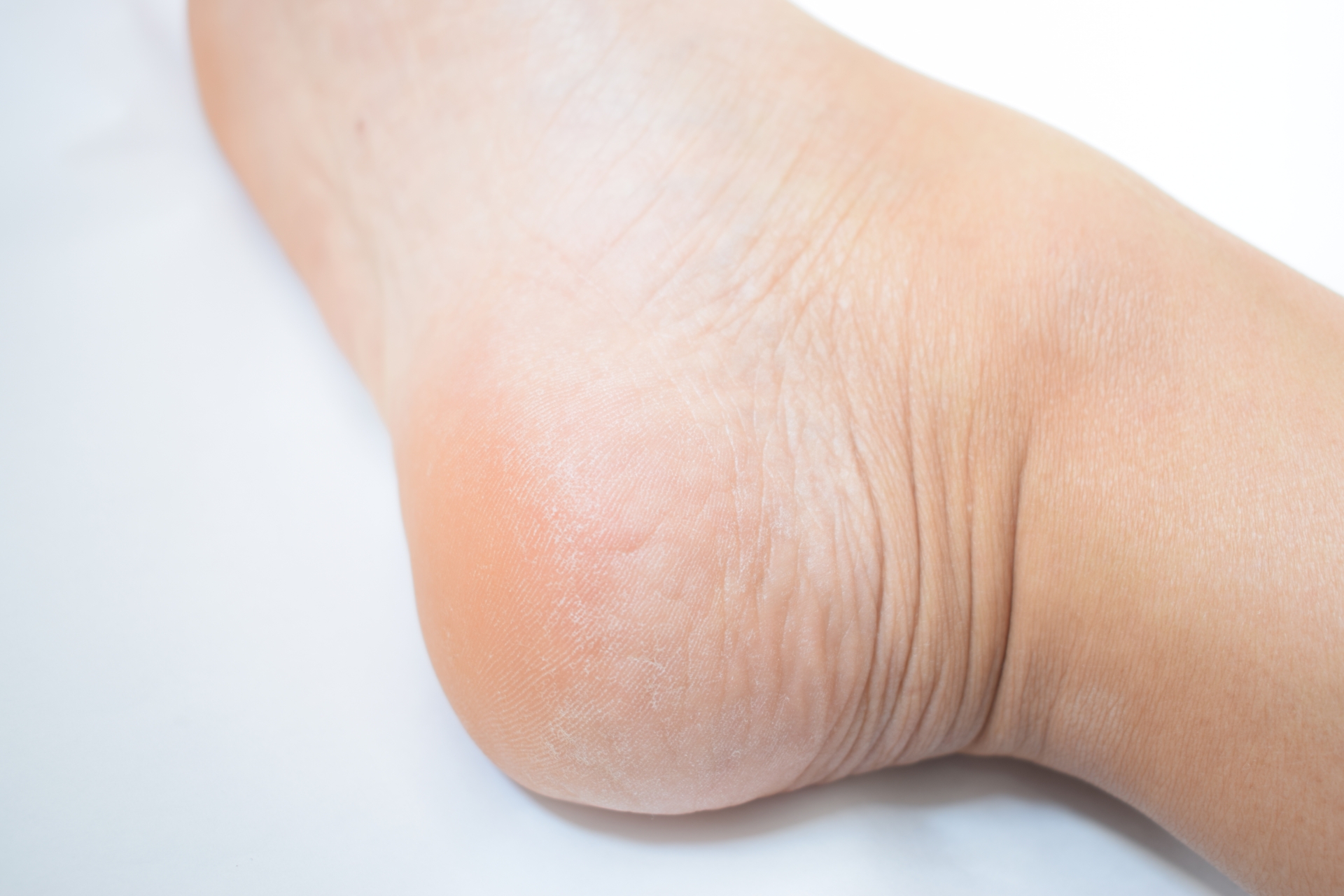
Roughness and cracking of the heel can be caused by the characteristics of the heel or by daily habits.
1-1. Due to heel characteristics
The skin is connected by a single piece of skin from the tip of the head to the tip of the foot.
Every part of human skin is made up of three layers, "epidermis," "dermis," and "subcutaneous tissue (fat, etc.)" from the surface.
Furthermore, the epidermis has a four-layer structure, and the epidermis cells born in the innermost basal layer are pushed up to the outermost side over about one month, and the pushed up layer is called the "stratum corneum".
The stratum corneum, like a wrap, covers the tissues under the skin to keep it moisturized and protect it from foreign substances and pathogenic bacteria.
Cracks in the heel have a great deal to do with the condition of this stratum corneum.
1. Hardening of the heel
The sole of the foot is the part that supports the weight of a person. When performing the movements of standing and walking, the entire weight is always applied to the soles of the feet to support the body.
As a result, friction and pressure are generated on the soles of the feet, and the stratum corneum of the heel gradually becomes harder and thicker as a function to protect the body.
2. No pores
There are no pores on the soles and heels.
Since there are organs called sebaceous glands that secrete sebum in the pores, there are no sebaceous glands on the soles and heels of the feet that have no pores.
The sebum mixes with sweat on the surface of the skin to form a sebum film and prevents the evaporation of water from the surface of the skin, but since the heel does not have such a function, the moisturizing effect of sebum cannot be expected. is.
On the other hand, there are many sweat glands on the soles and heels, so you sweat a lot.
When sweat evaporates, it also deprives the surrounding water, so the soles and heels of the feet, which do not secrete sebum and are easy to sweat, are easy to dry and rough, and crack easily.
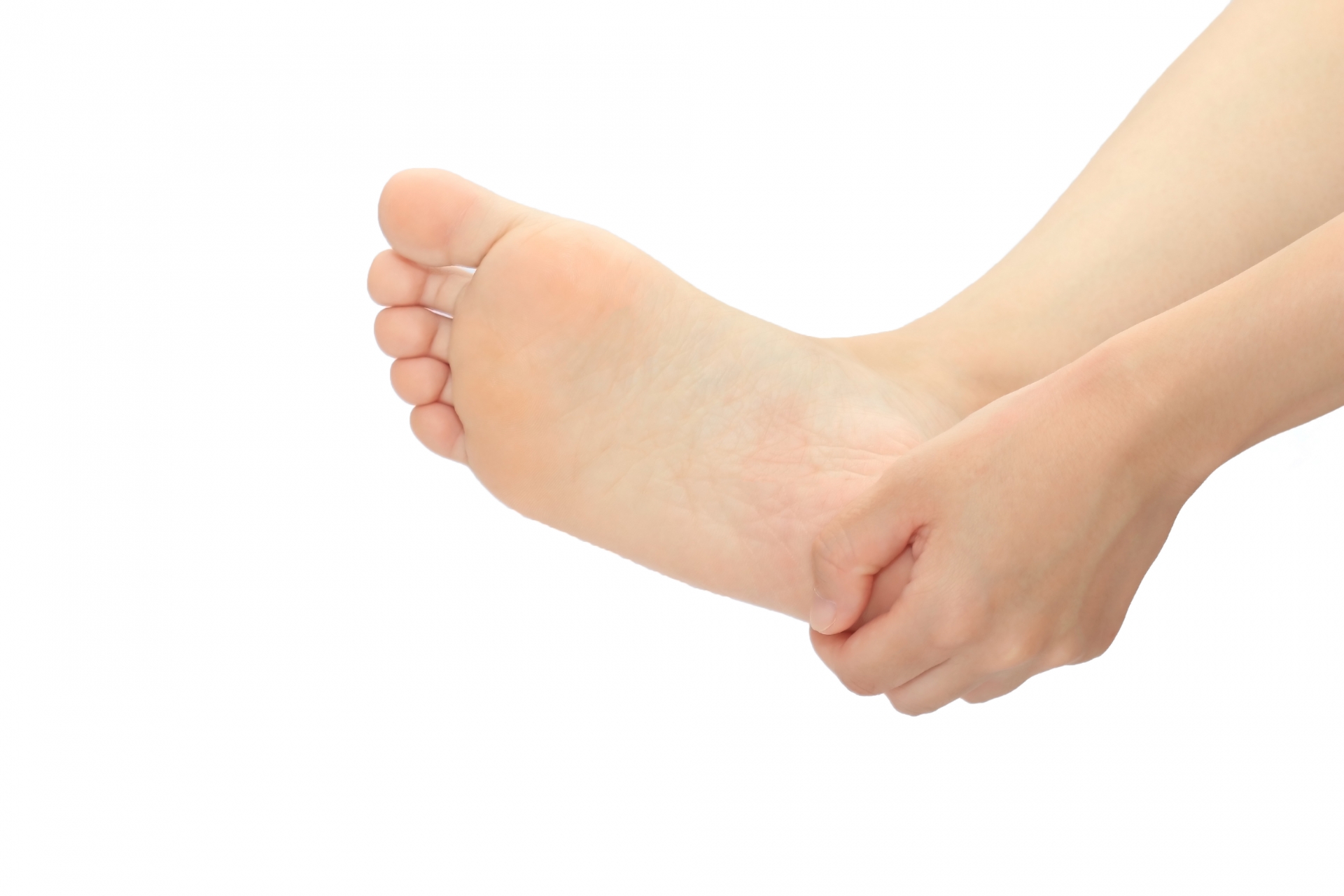
3. Blood flow tends to be poor
The heel is the terminal part of the body.
Since it is the farthest from the heart, blood flow tends to be poor, so water and nutrients are not sufficiently distributed.
The cells of the body are made from the nutrients that the blood delivers, and lack of that nutrient makes it difficult for new cells to be made, causing disturbed skin turnover and dryness.
1-2. Due to daily habits
What we do casually and what we have to do at work is one of the causes of heel cracking.
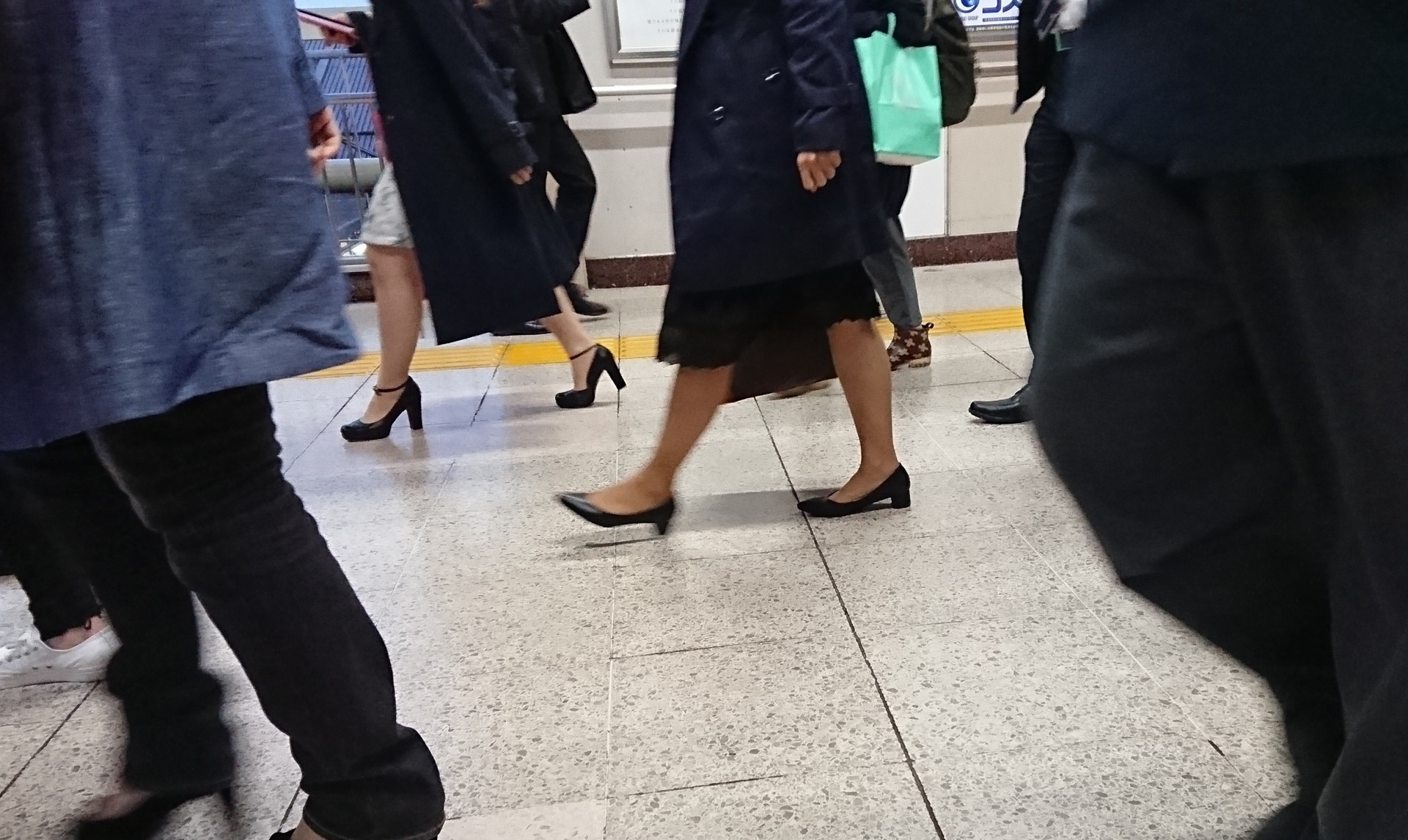
1. Stimulation/burden on the feet
Walking with shoes that do not fit your feet will cause more friction and pressure than necessary, which will increase the irritation of your heels.
Also, since it takes longer for sales staff and standing workers to support their weight with the soles of their feet, it can be said that the friction on the heels is large and the stratum corneum tends to thicken.
Also, if the muscles of the buttocks and abdominal muscles are weak, the pelvis tilts behind, causing the center of gravity to move closer to the heel, and the pelvis of the O-leg becomes unstable, so when walking, the weight of the pelvis is increased. It is difficult to support with the heel, and the shape is such that it lands on the ground from the outside of the heel, causing friction on the heel.
2. Foot stuffiness
Moisture in the feet is one of the reasons why more people suffer from cracked heels in winter than in summer.
The ease of sweating from the soles of your feet depends on your constitution and whether you have an exercise habit that raises your body temperature.
Also, in winter, as a measure against cold weather, I think that there will be more opportunities to put a heater under your feet, use floor heating, and wear boots when you go out.
It's great for getting cold and enjoying fashion, but in these environments, it's easier to sweat on the soles of your feet, which can help dry your soles.
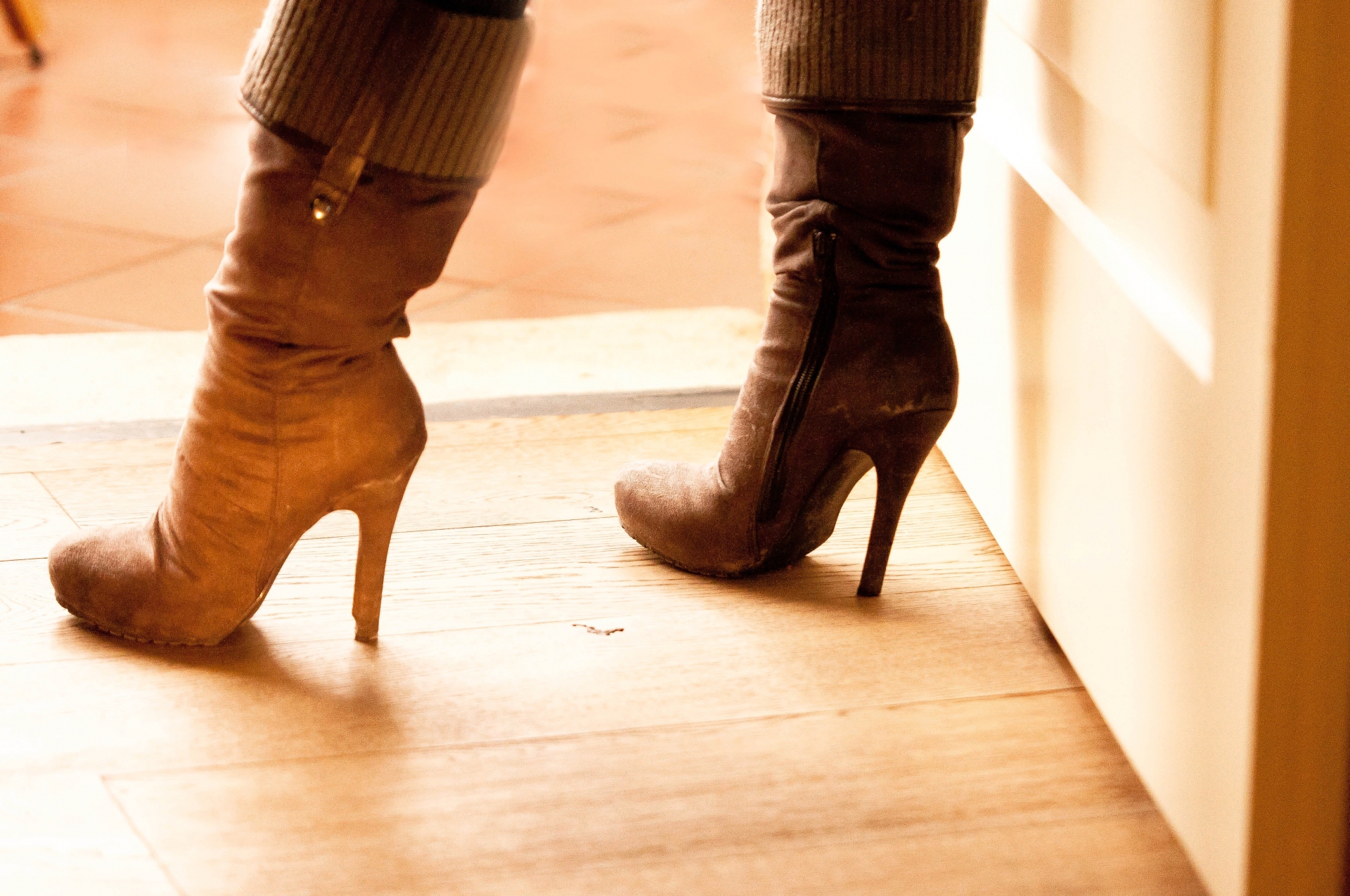
2. Effective for cracked heels! How to improve at home
The cause of the cracks in the heel was the friction and dryness of the stratum corneum of the foot.
Once you know the cause, take care to improve it.
Cracks in the heel do not have an immediate effect just because of some care.
It is important to continue.
It's hard to continue if you have a lot of items or it takes time.
Therefore, here we will introduce an easy improvement method at home.
2-1. Non-shaving keratin care

The key to crack care caused by dry and rubbed heels is the removal and moisturization of dead skin cells.
When you hear that you want to remove dead skin cells, you may think that you should use a file or pumice stone to grind it, but forcibly scraping it will damage your skin, and if you scrape it too much, it may thicken the dead skin cells. I can't recommend it because there are some.
You should also pay attention to the recently popular keratin pack for feet. In particular, for products containing hydroxy acids, which are used in chemical peels, many reports of accidents such as burns have been received at consumer centers because the action of dissolving keratin is too strong.
The recommendation is to moisturize and remove dead skin cells at the turnover.
Details will be explained in 2-3.
It will take some time, but it is important to keep your heels clean.
"Do not scrape" leads to keratin care.
2-2. Moisturizing
A moisturizing item recommended for hardened heels is a cream containing urea.
Moisturizing with urea lifts and retains subcutaneous water up to the stratum corneum, softening the stratum corneum that has hardened due to drying.
Creams containing urea can be purchased at drug stores. There are various types, such as those with a high or low urea content, and those containing a refreshing ingredient in the main component urea.
Choose the one that suits you.
If you feel that the urea-containing cream is not suitable for your skin, we recommend creams and petrolatum containing heparinoids, which have high moisturizing power and promote blood flow improvement.
Make it a habit to moisturize after bathing.
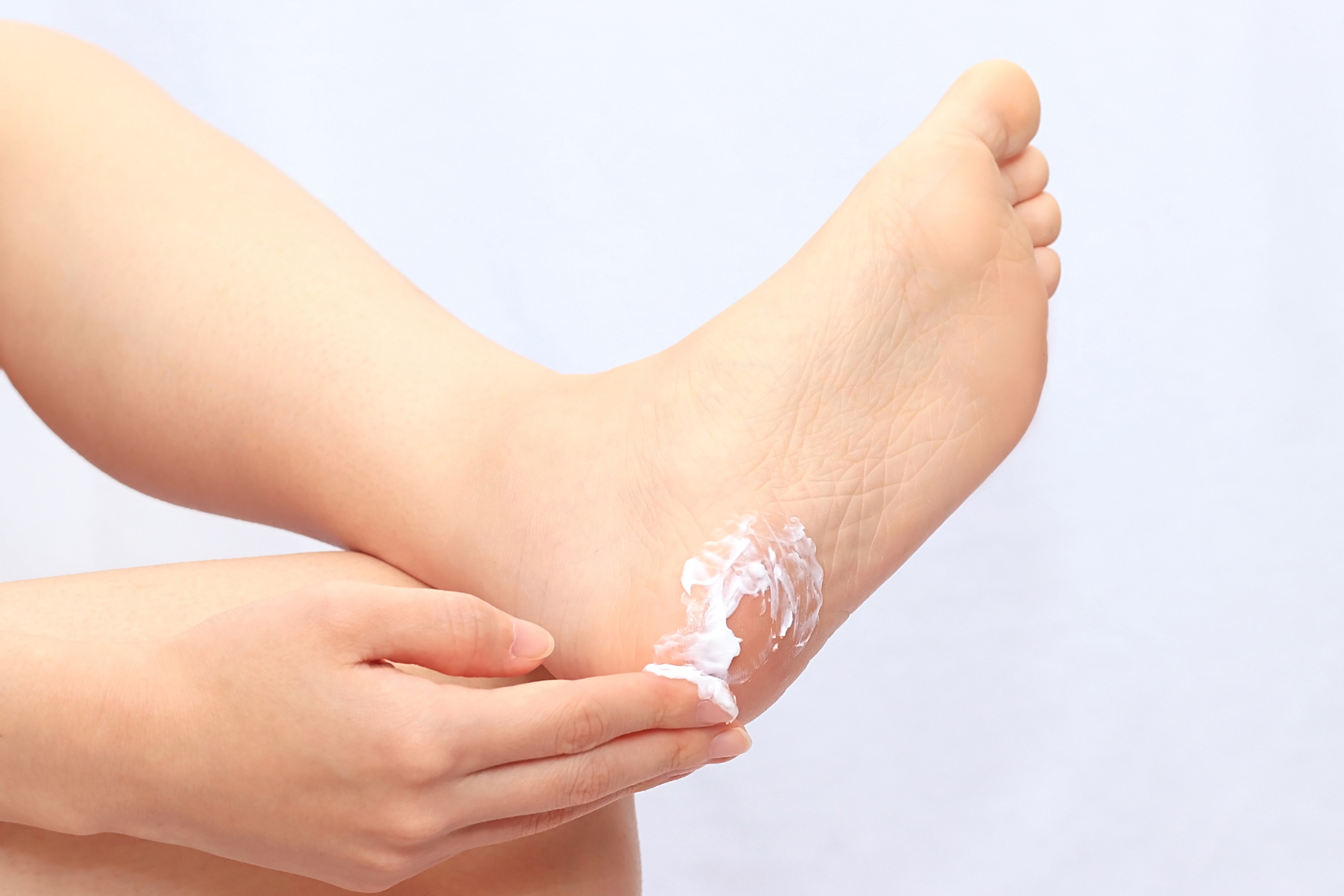
2-3. Intensive care to remove dead skin cells according to turnover
Introducing the "non-shaving keratin care" explained in 2-1.
The point is not to forcibly remove dead skin cells, but to moisturize and remove dead skin cells at the turnover.
1. After bathing, apply a generous amount of urea-containing cream to the surface of the heel while the keratin of the heel is softening.
2. Cover your heels tightly with wrap and put on socks to sleep. Repeat this for a few days.
3. Three points to prevent cracks in the heel
Cracks in the heel are painful, aren't they?
It is important to prevent it before it cracks.
Here are four easy preventative measures you can take at home.
3-1. Moisturize immediately after bathing
As mentioned in the previous chapter on how to improve heel cracks, moisturizing is also important for prevention.
To keep it moisturized for a long time, we recommend using a thick texture.
However, if you are not good at heavy feeling and use a material with a silky texture, apply it frequently several times.
3-2. Review how to walk and shoes
If you are walking or have a tendency to walk with the center of gravity on your heels, try to move your weight from your heels to your toes.
For shoes, sneakers are recommended over high heels and pumps.

High heels and other tall shoes do not move your ankles when you move your feet back and forth while walking.
The movement of the ankle stretches and contracts the soleus muscle, which is the calf muscle.
The soleus muscle is said to be the second heart, and this expansion and contraction act as a pump, returning the blood in the legs upwards, contrary to gravity.
If you wear heels, your ankles will not move, this pump will not work, and blood and lymph will collect under your knees, causing swelling.
Besides, not only the blood flow in the legs but also the blood flow in the whole body is blocked, which leads to not only the coldness of the ends but also the coldness of the whole body.
If you have to wear shoes with heels for your work, it is important to choose the one that suits your feet.
https://wellmethod.jp/sneaker/
3-3. Take measures against cold
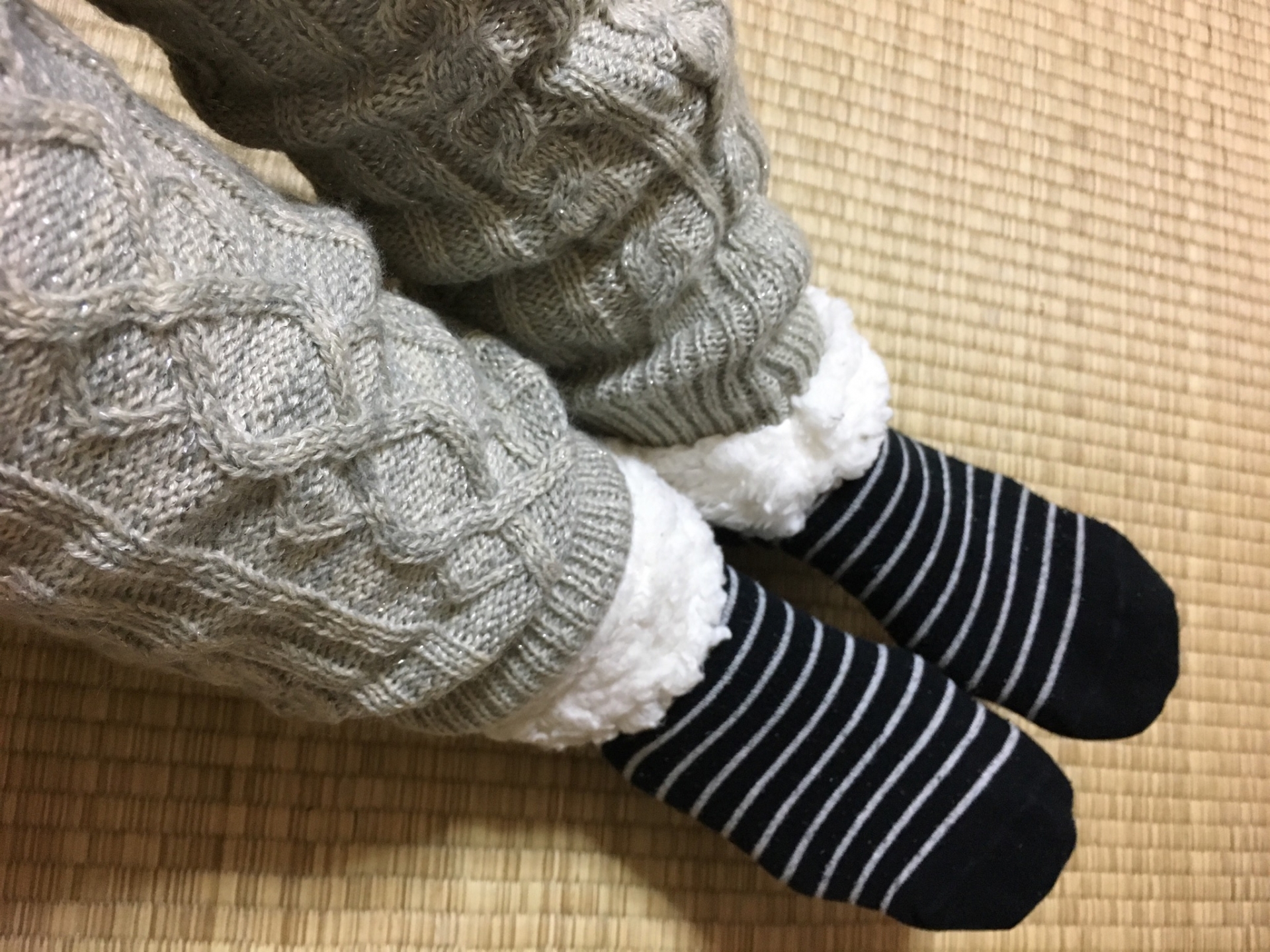
When blood circulation deteriorates due to cold, the heels become dry and become a cause of rough heels.
As a measure against cold
・ Warm the lower body
・ Do not cool from the knees to the ankles ・ Do not cool the
abdomen
・ Do not tighten with girdles or foundation
garments
・Wear sneakers instead of high heels or boots that cause poor circulation at the ends・ Slowly soak in the bathtub instead of the shower
It is important to suppress such points and to exercise regularly to build muscle and raise basal metabolism.
If you want to improve blood flow with topical agents, we recommend ointments and creams containing vitamin E and heparinoids.
Click here for more information on other ingredients that warm your body.
▼ [Doctor's commentary] Warm ingredients and cold prevention habits
4. If it does not improve, go to the hospital
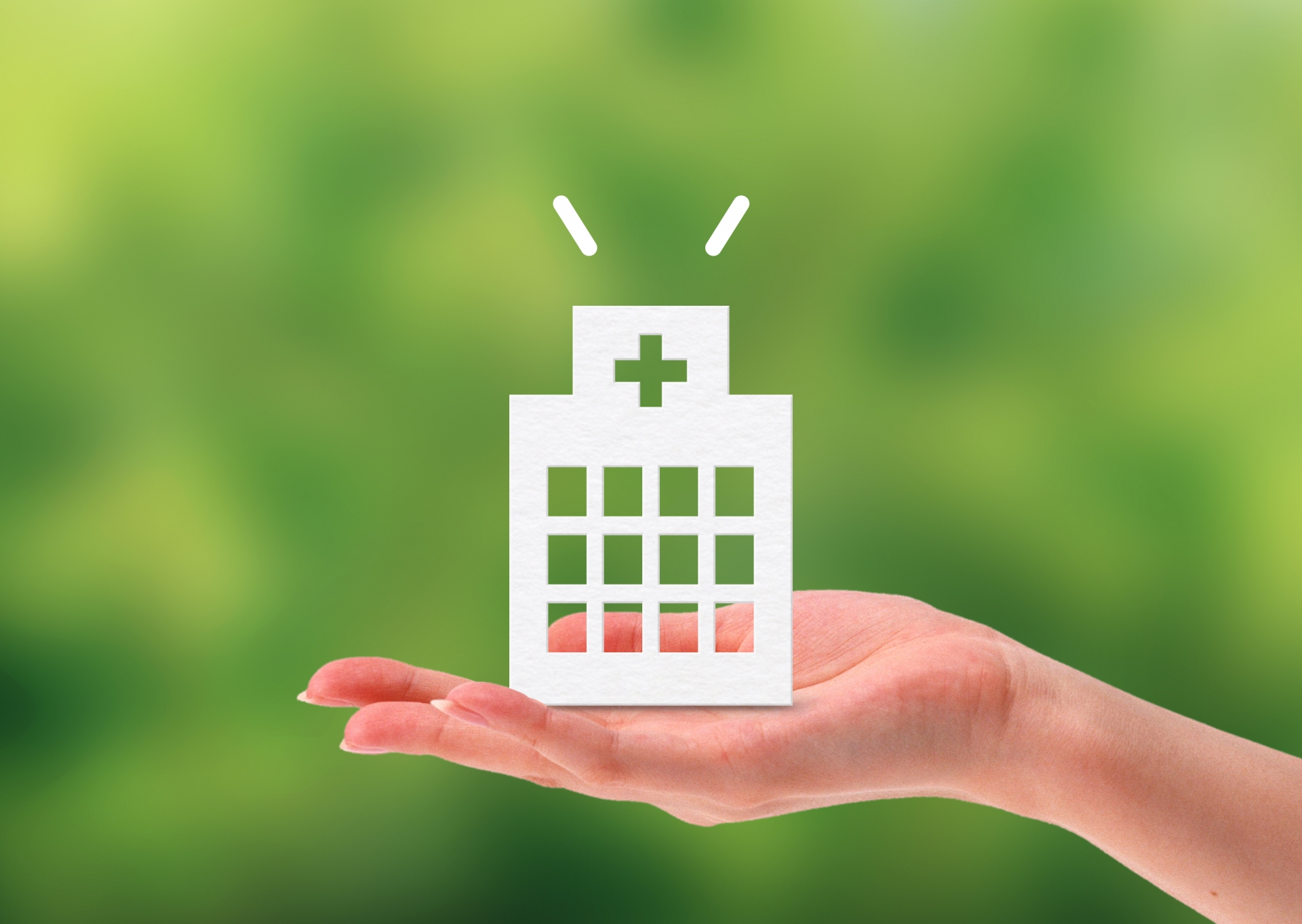
If moisturizing doesn't help, or if you're worried about cracks in your heels even in the summer, it could be due to something other than dryness.
Diseases that cause rough heels include the following:
4-1. Athlete's foot
When you hear athlete's foot, you may think of it as jerky or itchy, but athlete's foot, which is often found on the heels, is "hyperkeratotic." It is also called dry athlete's foot.
It is not jerky or itchy and is characterized by a rough, dusty appearance.
Heels may also crack during the dry season.
4-2. Octopus (Callus: Bianchi)
Octopus is a disease in which a part of the skin becomes evenly thick and hard.
It is easy to make it in the place where the toes overlap, but it can also be made in other places where pressure is applied.
It looks similar to "Uonome (corn: corn)", but Uonome has a core, but octopus does not.
The characteristic of pain is that "Uonome" with a core is sharper and stronger.
4-3. Warts (warts Vulgaris: warts)
Warts are diseases that occur when a virus (a type of papillomavirus) infects the keratin from a small wound. There are many things you can do, not just one.
Rather than the entire heel being rough, the warts are rough.
The appearance is similar to that of corns and octopuses, but warts may stick to each other and look like a mosaic pattern, so it is easy to understand.
5. Careful care without overdoing the points that lead to cleanliness
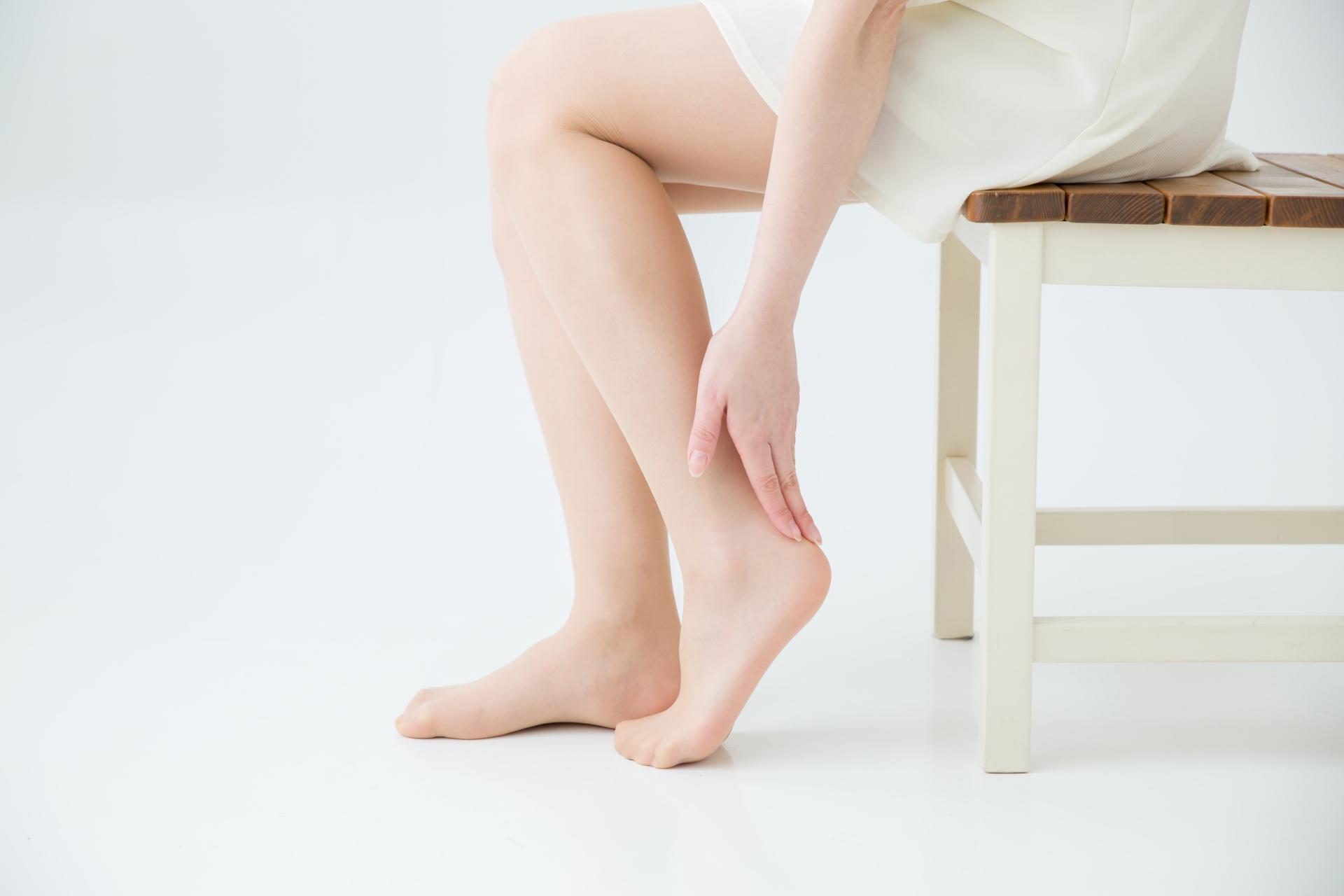
Previously, the heel crack care I had done was to "shave off dead skin."
However, even if it is scraped or scraped, the symptoms will only get worse.
However, after continuing the care I introduced this time, the roughness of the heels has been reduced, and it has become so clean that it is not embarrassing to be barefoot in public.
It's kind of ironic that forcibly scraping the heel for a quick and clean look made it worse.
The same may be true of our lives.
If you care about people's eyes and pretend to be yourself, struggle against your age, or force yourself to push your mind and body, you have no children.
I feel that it is important to take care of each one carefully.
The ideal way of life for me now is to say, "That person can afford it," and "I'm getting older nicely."
I want to be honest with myself and grow older without overdoing it.


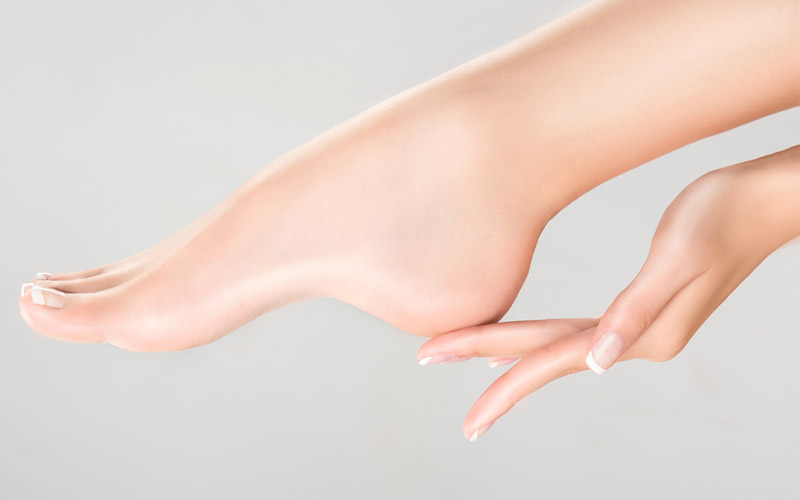
Post a Comment